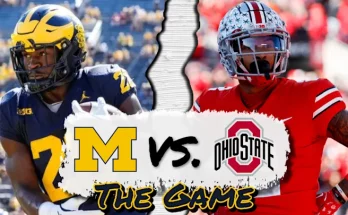In the world of international basketball, few performances capture the imagination quite like those that challenge historical benchmarks and draw direct comparisons to elite NBA talent. Recently, Filipino-American guard Dwight Ramos achieved a remarkable feat in the FIBA international competition, finishing with a point total that drew the attention of basketball enthusiasts worldwide, particularly for its proximity to the scoring mark set by Team USA’s Anthony Edwards. This milestone is more than just a numerical achievement; it signals the emergence of a new generation of international players capable of competing at the highest levels of the sport, bridging the gap between regional leagues and the global stage.
Dwight Ramos has long been recognized for his scoring ability, versatility, and basketball IQ, which have been evident since his collegiate career in the United States. Born and raised with a dual cultural identity, Ramos has successfully merged the athletic rigor of American basketball with the passionate playing style often seen in Filipino leagues. His journey to FIBA prominence was marked by dedication, adaptability, and a willingness to embrace challenges that would prepare him for international competition. By the time Ramos entered the FIBA tournament, fans and analysts alike were eager to see whether his scoring prowess could translate on a stage where the world’s elite talent converges. What transpired not only met but exceeded expectations.
Throughout the FIBA campaign, Ramos displayed an extraordinary scoring rhythm that was both consistent and explosive. Game after game, he found ways to contribute not just points but also key assists, defensive stops, and momentum-shifting plays that kept his team competitive against some of the most formidable opponents in international basketball. Observers noted his exceptional court vision and his ability to read defenses, allowing him to exploit gaps and create scoring opportunities either for himself or for his teammates. It was precisely this combination of scoring efficiency and playmaking that enabled Ramos to approach a historic point total, one that drew inevitable comparisons to Anthony Edwards, the prodigious talent representing Team USA.
Anthony Edwards, widely regarded as one of the most dynamic young scorers in the NBA today, had previously set a high bar in FIBA scoring that few could realistically aspire to challenge. Known for his explosive athleticism, lethal shooting, and ability to dominate games in critical moments, Edwards’ record had long stood as a testament to elite-level skill and preparation. The fact that Dwight Ramos came close to matching Edwards’ point total speaks volumes about the Filipino-American guard’s talent, preparation, and composure under international pressure. While comparisons are often reductive, they do serve a purpose: highlighting how certain players, through sheer skill and dedication, manage to rise to a level that places them in the company of basketball’s rising global stars.
The implications of Ramos’ performance extend beyond mere statistics. For the Philippines, a country with a rich basketball culture but historically limited representation on the global stage, his achievements resonate profoundly. Basketball is not merely a sport in the Philippines; it is a cultural phenomenon that unites communities, inspires youth, and generates immense national pride. Ramos’ near-record scoring performance provides a tangible symbol of Filipino talent breaking through international barriers, offering hope and motivation for young players aspiring to compete globally. It also emphasizes the importance of investment in player development, coaching, and competitive exposure, proving that with the right environment and support, players from smaller basketball markets can compete alongside the world’s best.
Ramos’ performance was also a masterclass in adaptability and resilience. International competitions often involve a grueling schedule, extensive travel, and the need to quickly adjust to different playing styles, refereeing standards, and tactical schemes. Despite these challenges, Ramos maintained a high level of efficiency and focus, demonstrating not only his physical conditioning but also his mental toughness. His ability to sustain scoring output under these conditions is particularly impressive given the caliber of the opposition, which included teams boasting NBA-caliber athletes, seasoned European professionals, and emerging talents from various basketball powerhouses. This consistency under pressure is precisely what separates good players from truly exceptional ones in the eyes of coaches, scouts, and analysts.
A critical aspect of Ramos’ scoring success lies in his offensive versatility. Unlike players who rely solely on a single strength—whether it be perimeter shooting, driving to the basket, or post play—Ramos showcased a comprehensive offensive toolkit. He could attack the rim with agility and strength, pull up for mid-range jumpers, or stretch the defense with precise three-point shooting. Furthermore, his off-ball movement and ability to read defensive rotations allowed him to exploit mismatches effectively, creating high-percentage opportunities for himself and his teammates. This level of adaptability makes him not just a scorer but a complete offensive threat, capable of influencing the game in multiple dimensions, much like Anthony Edwards has demonstrated for Team USA.
Defense, often overlooked in discussions centered on scoring, also played a significant role in Ramos’ performance. By applying pressure on opposing guards, disrupting passing lanes, and generating turnovers, he contributed to transition scoring opportunities, which further augmented his point totals. Defensive intensity is frequently what separates top-tier scorers from one-dimensional shooters; by excelling on both ends of the court, Ramos proved that he is capable of contributing in a manner that transcends box score statistics. His defensive acumen, combined with his scoring efficiency, makes him a player whose impact cannot be fully captured by point totals alone, although those totals remain an impressive headline.
The broader basketball community has taken notice of Ramos’ achievements. Scouts, coaches, and analysts have highlighted his performance as evidence of the growing international talent pool, signaling that the next generation of global basketball stars may come from increasingly diverse backgrounds. For Ramos, the recognition brings new opportunities—whether in professional leagues across Asia, Europe, or potentially the NBA. His ability to perform at a high level in FIBA competition suggests that he possesses the skills, work ethic, and composure necessary to succeed in elite professional environments. Moreover, his story resonates as an inspirational narrative for aspiring athletes who dream of representing their countries and making a mark on the global stage.
Statistical milestones, while significant, also underscore the evolving nature of basketball analytics and performance evaluation. Ramos’ scoring achievements invite deeper analysis into shot selection, scoring efficiency, usage rates, and the impact of context—such as the quality of opposition, game pace, and team dynamics. Analysts can examine how he balanced volume shooting with efficiency, how his scoring output influenced game outcomes, and how he adjusted his strategy based on defensive schemes. These insights not only enrich our understanding of Ramos as a player but also contribute to broader discussions about the metrics that define elite performance in international basketball.
Comparisons to Anthony Edwards, while inevitable, also serve to contextualize Ramos’ achievements within a global framework. Edwards is known for his capacity to dominate at the highest level, combining raw athleticism with refined skill and strategic awareness. By approaching his FIBA point record, Ramos signals that he is operating within a similar echelon, at least in terms of scoring capability. This comparison should not be seen as diminishing Ramos’ unique style or individuality; rather, it highlights the universal language of basketball excellence. Scoring proficiency, basketball IQ, adaptability, and composure under pressure are attributes that transcend national boundaries, and Ramos’ performance demonstrates that he embodies these qualities in a manner worthy of international attention.
The excitement surrounding Ramos’ near-record performance also reflects the growing competitiveness and visibility of FIBA tournaments. International competitions increasingly attract scouts, media attention, and fan engagement, offering players a platform to showcase their skills beyond regional leagues. For Ramos, performing at this level not only enhances his reputation but also contributes to the broader narrative of basketball globalization. Fans worldwide can witness firsthand how talented players from diverse backgrounds can challenge established norms, elevate the level of play, and inspire the next generation of athletes.
Looking forward, Ramos’ achievements in FIBA serve as both a benchmark and a springboard. While his near-record points are a historic milestone, they also raise expectations for future performances and professional aspirations. Players who excel internationally often leverage such achievements into professional contracts, endorsements, and leadership roles within their national teams. For Ramos, maintaining consistency, expanding his skill set, and adapting to evolving tactical demands will be key to sustaining momentum and capitalizing on the opportunities that follow. The comparison to Anthony Edwards, far from being a ceiling, should be viewed as a challenge to continue pushing boundaries and refining his craft.
The significance of Ramos’ performance also lies in its ability to inspire dialogue about the broader ecosystem of basketball development. National federations, youth programs, and professional leagues can analyze his trajectory to understand the factors that facilitate international success. These include early skill development, access to high-level competition, coaching quality, physical conditioning, and psychological preparation. By examining how Ramos navigated these elements to achieve near-record scoring, basketball stakeholders can glean valuable lessons for nurturing talent, enhancing competitive standards, and fostering pathways for future stars.



